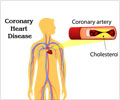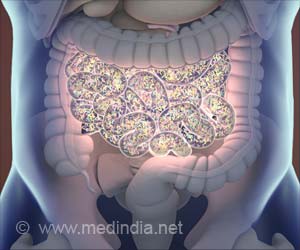Far more of today’s heart attack patients receive emergency angioplasty treatment or clot-busting drugs to re-open their clogged heart arteries than even a decade ago, a new study finds.
But 10 percent of patients who could benefit from this urgent treatment – which is known to save lives and prevent lasting damage to the heart muscle – don’t get it at all, the study shows.And the chance of missing out on lifesaving emergency treatment was highest among those patients whose heart attack symptoms don’t include typical symptoms like chest pain, those who didn’t reach the hospital until six or more hours after the start of their attack, women, people over age 75, and non-white people.
The study, published in the American Journal of Medicine by a team led by cardiologists from the University of Michigan Cardiovascular Center and the Yale University School of Medicine, is based on data from 238,291 patients who had had a type of heart attack for which this therapy is appropriate between 1994 and 2003.
It’s the most current and comprehensive look at the use of emergency “reperfusion” – a term that describes treatments that can break up blood clots and other blockages in the tiny blood vessels of the heart and restore blood flow to the heart muscle.
In the ten-year study period, the percentage of patients who could have received emergency reperfusion but didn’t declined from more than 20 percent to 10 percent – a notable achievement that the authors attribute to the increasing evidence of the benefit of emergency angioplasty, and the rise in the availability of the treatment at American hospitals and concerted national efforts to improve care.
The database used for the study, called the National Registry of Myocardial Infarction, includes detailed information about each patient’s condition that can be used to determine if they would meet the criteria to receive emergency angioplasty or treatment with fibrinolytic (clot-busting) medications.
Advertisement
“We may never be able to get to 100 percent, but 10 percent of eligible patients going untreated is still too many,” says first author Brahmajee Nallamothu, M.D., MPH, assistant professor of cardiovascular medicine at the U-M Medical School.
Advertisement
Adds senior author Harlan Krumholz, M.D., S.M., “This study has good and bad news. We have definitely made progress in treating appropriate patients, but our findings indicate that we need to improve further to be sure that no patient who could benefit from this treatment is missed.”
Krumholz is the Harold H. Hines, Jr. Professor of Medicine in the Section of Cardiovascular Medicine and director of the Yale-New Haven Hospital Center for Outcomes Research and Evaluation.
The study was funded by the National Heart, Lung and Blood Institute of the National Institutes of Health. Genentech, Inc. provided the researchers access to the registry, which it sponsors.
To track the changes in acute (emergency) reperfusion therapy over time, the researchers divided the study data into three time periods: June 1994 through May 1997, June 1997 through May 2000, and June 2000 through May 2003.
The rise in emergency angioplasty was fastest from the first time period to the second; the rate of increase leveled off from the second time period to the third. Correspondingly, the number of patients receiving medication-based reperfusion dropped over the study period.
This is an appropriate shift, says Nallamothu: shifting patients from clot-busting medications to emergency angioplasty may save 12 to 20 lives for every 1,000 heart attack patients treated, if the angioplasty is performed in a timely manner.
The study involved patients who had a particular type of heart attack, called STEMI, for ST-elevated myocardial infarction. Emergency angioplasty is considered the best immediate treatment for STEMI.
However, the study did not look specifically at the time that elapsed from the moment the STEMI patient arrived at the hospital to the time when the reperfusion treatment began. This is often called “door to balloon time” because of the use of tiny artery-opening balloons in the angioplasty procedure.
Hospitals around the nation, including U-M and Yale, are taking part in a national campaign to reduce this time interval for patients who receive emergency angioplasty, and studies have shown that patients who are treated within an hour or two of arrival at the hospital do better in the long term than those who wait longer for angioplasty.
But the fact that 10 percent of possible emergency angioplasty candidates still aren’t even getting the procedure at all is a significant issue of its own, the authors say. Increasing its use in these patients could save up to an additional 30 lives for every 1,000 heart attack patients treated when performed in a timely manner.
In fact, the authors state that hospitals should be judged in part by their ability to deliver acute reperfusion to as many candidate patients as possible. “Our findings support the incorporation of a measure of reperfusion use into national quality improvement efforts,” they write. An American College of Cardiology/American Heart Association task force has endorsed this same idea.
In the meantime, the study results again point to the importance of rapid response to heart-attack symptoms by individuals and their loved ones – and the need to recognize that chest pain may not occur in everyone who has a heart attack.
In the study, patients who came to the hospital with no chest pain but with other symptoms of heart attack were less than one-third as likely as those with chest pain to get emergency reperfusion treatment. Patients who waited six or more hours before they reached the hospital were 40 percent less likely to get emergency reperfusion.
Source-Eurekalert
JAY/J











